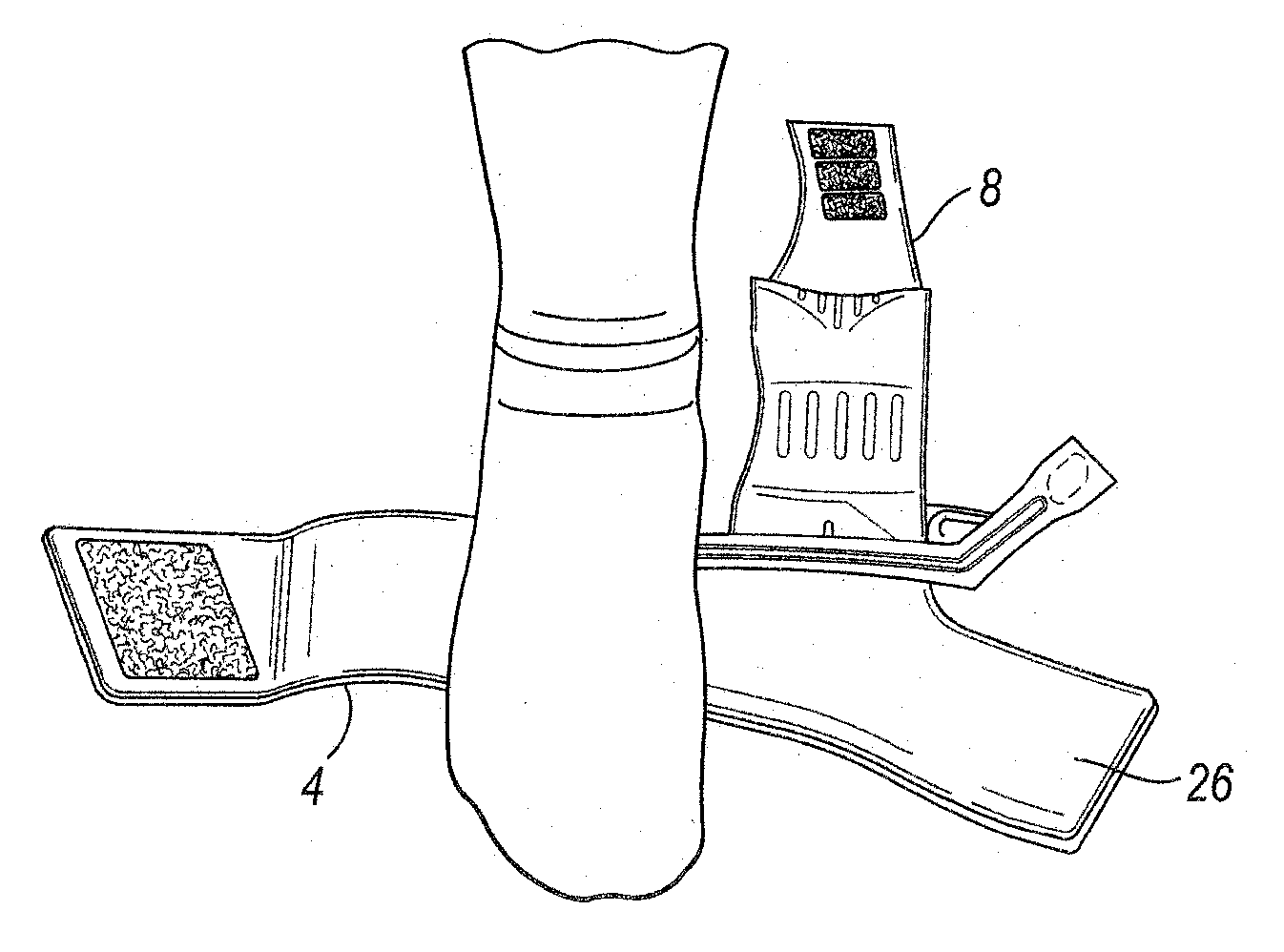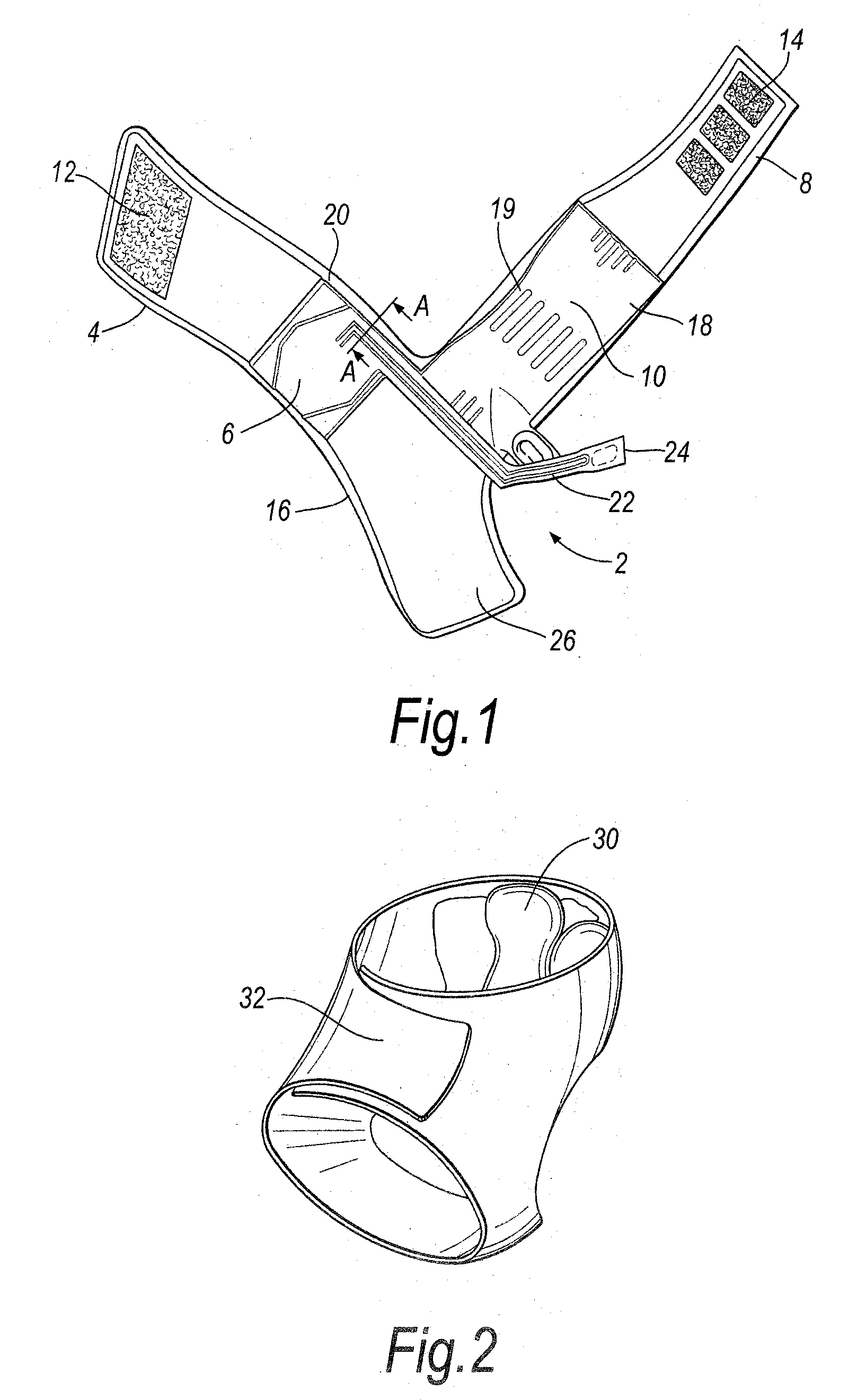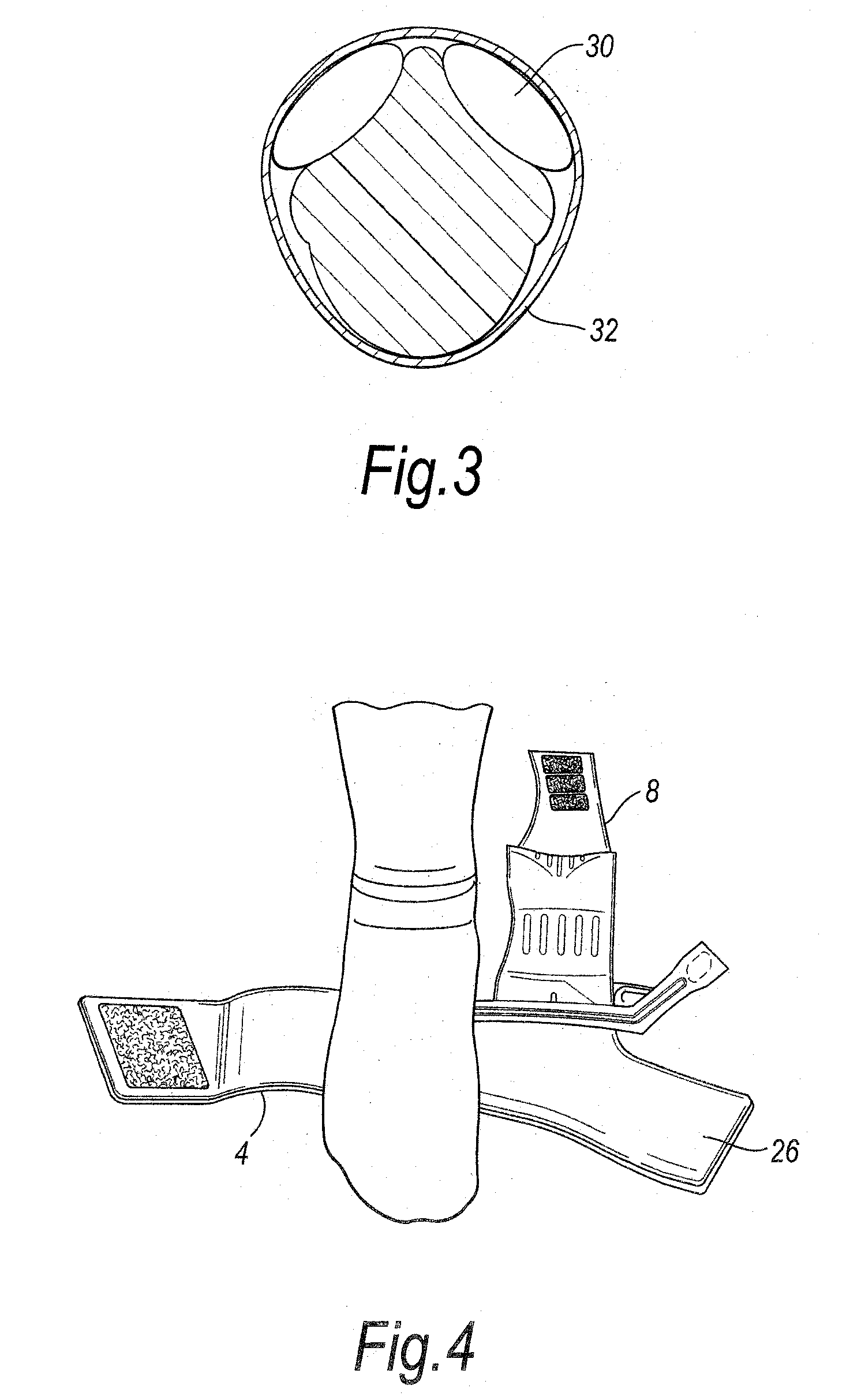Compression device for the foot
a compression device and foot technology, applied in the field of compression devices for the foot, can solve the problems of reducing the residence time of blood supplied to the lower limb, tissue breakdown, and known devices not only affect patient mobility, but also are aesthetically unacceptable to many patients, and achieve the effect of not reducing mobility
- Summary
- Abstract
- Description
- Claims
- Application Information
AI Technical Summary
Benefits of technology
Problems solved by technology
Method used
Image
Examples
second embodiment
[0036] In a second embodiment, the invention provides a cuff for providing compression to a limb, the cuff comprising an outer wall joined to an inner wall to form a bladder, the bladder being provided with a spacer to separate the walls to create a channel for fluid to flow into and out of the bladder.
[0037] The advantage of the cuff of the invention is that the separating means allow the bladders to be shaped so that the compression generated by the device can be focused on those areas where ulcers are more prevalent without compromising the path for fluid movement.
[0038] The spacer is made from a relatively incompressible material that spaces the walls apart but does not allow the bladder or channel to become obstructed in the manner that a tube may become obstructed by kinking or collapsing or being flattened against, for instance, a shoe.
[0039] Preferably, the bladder walls are selectively welded together so that inflation of the bladder is limited in the welded areas which c...
third embodiment
[0042] In a third embodiment, the invention provides a channel for connecting one or more bladders to each other or to a controller, the channel comprising an elongate outer wall joined to an elongate inner wall, the channel being provided with means to separate the walls to create a path for fluid to flow into and out of the channel.
[0043] The separating means are preferably a spacer provided on at least one wall of the channel and even more preferably a spacer provided on the inner wall of the channel and a spacer provided on the outer wall of the channel which spacers abut when the channel is deflated.
[0044] Having spacers on opposing walls means that each spacer need only be half the thickness of a single spacer on one wall yet achieve the same separation of the walls. This makes the channel or bladder more flexible and, as the spacers can slide against each other, enables the bladder and channels to conform readily to curved surfaces.
[0045] The spacers are preferably made fro...
PUM
 Login to View More
Login to View More Abstract
Description
Claims
Application Information
 Login to View More
Login to View More - R&D
- Intellectual Property
- Life Sciences
- Materials
- Tech Scout
- Unparalleled Data Quality
- Higher Quality Content
- 60% Fewer Hallucinations
Browse by: Latest US Patents, China's latest patents, Technical Efficacy Thesaurus, Application Domain, Technology Topic, Popular Technical Reports.
© 2025 PatSnap. All rights reserved.Legal|Privacy policy|Modern Slavery Act Transparency Statement|Sitemap|About US| Contact US: help@patsnap.com



